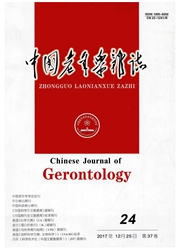

 中文摘要:
中文摘要:
目的比较研究紫外辐射强度、日照时间与腰椎骨密度(bone mineral density,BMD)的关系.方法检索国内公开发表的使用同一公司生产的双能X线骨密度仪(DXA)测量腰椎(L1-L4和L2-L4)BMD文章共12篇,与昆明地区8 774例腰椎BMD比较.将该13个地区的骨密度值转化成标准化骨密度值(s BMD).通过中国科学院生态系统研究网络找到相应地区的年平均紫外辐射强度及年平均日照时间.研究不同年龄段、不同性别的人群紫外辐射强度、日照时间与腰椎BMD的关系.结果该13个地区各年龄段男性和女性紫外辐射强度与腰椎BMD无相关性;该13个地区各年龄段男性和女性日照时间与腰椎BMD无相关性.结论该13个地区紫外辐射强度、日照时间对腰椎BMD的影响无差异.
 英文摘要:
英文摘要:
Objective To research the relationship between bone mineral density(BMD) and ultraviolet radiation intensity and sunshine time.Methods 12 published domestic articles about lumbar BMD(L1L4 and L2L4) measured by dual energy Xray absorptiometry(DXA) from the same company, were retrieved and compared with 8 774 cases of lumbar spine BMD in Kunming area.The BMD of the above 13 areas were turned into standardized BMD(s BMD).The annual average intensity of ultraviolet radiation and average sunshine time were found from the Chinese Academy of Sciences Ecosystem Research Network,so as to analyze the relationship between lumbar BMD and ultraviolet radiation intensity and sunshine time.Results The ultraviolet radiation intensity of men and women in all ages of the 13 region was not related to lumbar spine BMD.The sunshine time of men and women in all ages of the 13 region was not related to lumbar lumbar BMD.Conclusion The ultraviolet radiation intensity and sunshine time of the 13 region make no different influence on lumbar BMD.
 同期刊论文项目
同期刊论文项目
 同项目期刊论文
同项目期刊论文
 期刊信息
期刊信息
